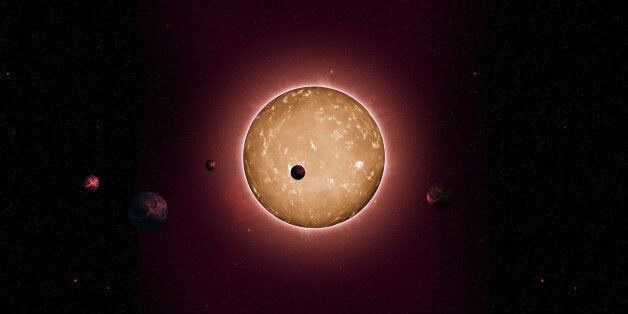
Alien life exists. I say that as a person who no longer believes it a prediction but one that can be backed up by sheer probability.
To even suggest that in a universe as large as ours the human race is the only form of sentient life is at best egotistical and at worst misguided. The problem we now face is time. It isn't on our side, it never has been, and if this recent discovery is anything to go by, it's much much worse than we thought.
I am referring to the University of Birmingham's recent discovery of an ancient solar system that has long since passed its prime and is now gently decaying into the slipper-wearing monotony of old age.
At 11.2billion years old, Kepler-444 is two and a half times older than our own solar system. To give you some idea, it was formed when the universe was just 20% of its current age.
This has caused a number of raised eyebrows, most of which are located on the foreheads of those at the University of Birmingham. Why? Well for starters it's very similar to our own, which suggests that for Earth-like planets to exist, you don't have to hang around for billions of years before you start the process of making life.
Secondly, discovering an ancient version of our own solar system is actually pretty strange. It's a snapshot into the future that rather unapologetically reminds us that - while it's impossible to fathom within the timeframe of our own species -- Earth will kick the bucket.
Finally - and most importantly - it suggests that life of any kind could well have started forming far earlier than first thought.
Imagine: whole alien civilisations could have formed, progressed, and reached levels of technological prowess that'd make the iPhone look like a paper clip. All before we even worked out that there was more to life than chasing mammoths and rolling large boulders down hills.
The University of Birmingham's Dr Tiago Campante sees this as a hugely exciting prospect saying, "there may be civilisations out there with a head-start of a few billion years. Imagine the level of technology."
Rather than be immediately excited by the promise of ultra-advanced alien races out there I'm left however with a rather more sobering thought.
What if we're too late?
There could be planets out there not bustling with alien life, but littered with the skyscrapers, landmarks and ruins that once played home to millions.
It sounds depressing but bear with me on this because there's a happy ending.
It's actually quite comforting knowing that while we - as a species - will remain firmly self-centered for the foreseeable future, there could be life out there that has made the same mistakes we've made.
Maybe they had to suffer through the social angst of the 'selfie stick', or had to face the depressing social phenomenon that is Kim Kardashian. By seeing ourselves in them, whether they're alive (or long extinct), it might just be the polite kick up the arse we need.
